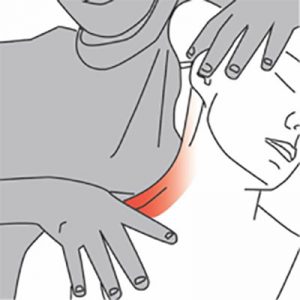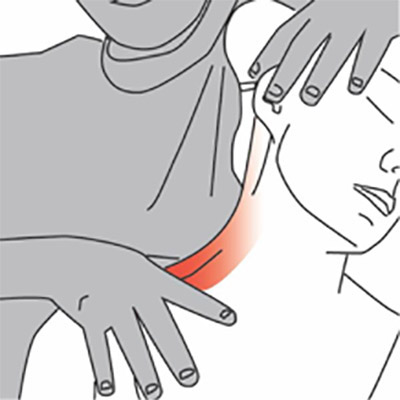Muscle Energy Techniques – Soft Tissue Release

Shin Splints
May 18, 2016
Muscle Activation Technique
July 10, 2016 What is a Muscle Energy Technique?
What is a Muscle Energy Technique?
Muscle Energy Technique (MET) is a manual therapy that uses the gentle muscle contractions of the client to relax and lengthen muscles and normalize joint range of motion. Popularly known simply as MET, muscle energy technique is a form of stretching commonly used by sports therapists, sports massage therapists, physiotherapists, chiropractors and fitness professionals. There is no standardized definition of this technique, which involves the active contraction of a muscle by the client against a resistive force provided by a second party (i.e., the therapist).
To define it specifically, it is “a direct manipulative procedure that uses a voluntary contraction of the patient’s muscles against a distinctly controlled counterforce from a precise position and in a specific direction”. It is considered an active technique, as opposed to a passive technique where only the therapist does the work.
MET is believed to be particularly helpful in lengthening postural muscles, which are prone to shortening. Theoretically, the active contraction performed by the client against the resistance produced by the therapist is an isometric contraction and may therefore be helpful in strengthening muscles. Also, contraction of one muscle group decreases tone in the opposing muscle group, and MET may therefore be beneficial in helping to overcome cramping. There is some debate about the degree of force a client should use when contracting a muscle before it is stretched, although low levels of contraction are advocated, certainly no more than 25 percent of the client’s maximum force capacity. This is especially important should the technique be used in early stages of rehabilitation after injury, when levels as low as 5 percent may be the most appropriate. MET is sometimes used with a pulsing motion (known as pulsed MET), which advocates claim helps reduces localized oedema.
There are two types of MET:
1. Post-Isometric Relaxation (PIR) The therapist stretches and lengthens a muscle as it relaxes right after a client contraction. This lengthens, relaxes and realigns the muscle fibres.
2. Reciprocal Inhibition (RI) It is a law of body dynamics that when you contract a muscle the opposing or reciprocal muscle must relax. That is the way the brain is wired and the principle that makes this technique work. The therapist has the client’s muscle perform a contraction against resistance which relaxes the opposing muscle.
As the patient performs an isometric contraction, the following physiologic changes occur:
• Golgi tendon organ activation results in direct inhibition of agonist muscles.
• A reflexive reciprocal inhibition occurs in the antagonist muscles.
• As the patient relaxes, agonist and antagonist muscles remain inhibited, allowing the joint to be moved further into the restricted range of motion.
What are MET’s used for?
To stretch muscles, especially those considered to be postural rather than phasic
To strengthen muscles
To relax muscles, especially useful for treating cramping muscles
To help regain correct muscle function
To reduce localized oedema
To reduce tension headaches
To reduce pain
Which other treatments are used alongside MET’s?
Muscle Energy Techniques can be used as a form of treatment alongside many other methods. We find the best results come from combining sports massage (deep tissue massage), trigger point therapy, myofascial release and mobility exercises. All of these treatment methods will increase blood circulation, reduce muscular tension and improve joint range of movement.
Who are MET’s for?
Muscle Energy Techniques can be used for anyone suffering with joint limitations or soft tissue related pain. Restricted movement can cause conditions like back pain, headache, scoliosis, sciatica, etc. Athletes or sedentary desk workers, children to elderly, chronic or acute pain.
Many athletes use MET as a preventative measure to guard against future muscle and joint injury. However, its mainly used by individuals who have a limited range of motion Patients with any form of inflammation will also benefit as MET’s have circulatory functions and help to reduce Oedema.
Muscle Energy Techniques are extremely beneficial with almost instant positive effect. An injury assessment will be applied before any treatment by your Sports Therapist, Physiotherapist, Chiropractor or Kinesiologist at DISC to determine the treatment methods that are most suited to your injury.
Lizzie.




